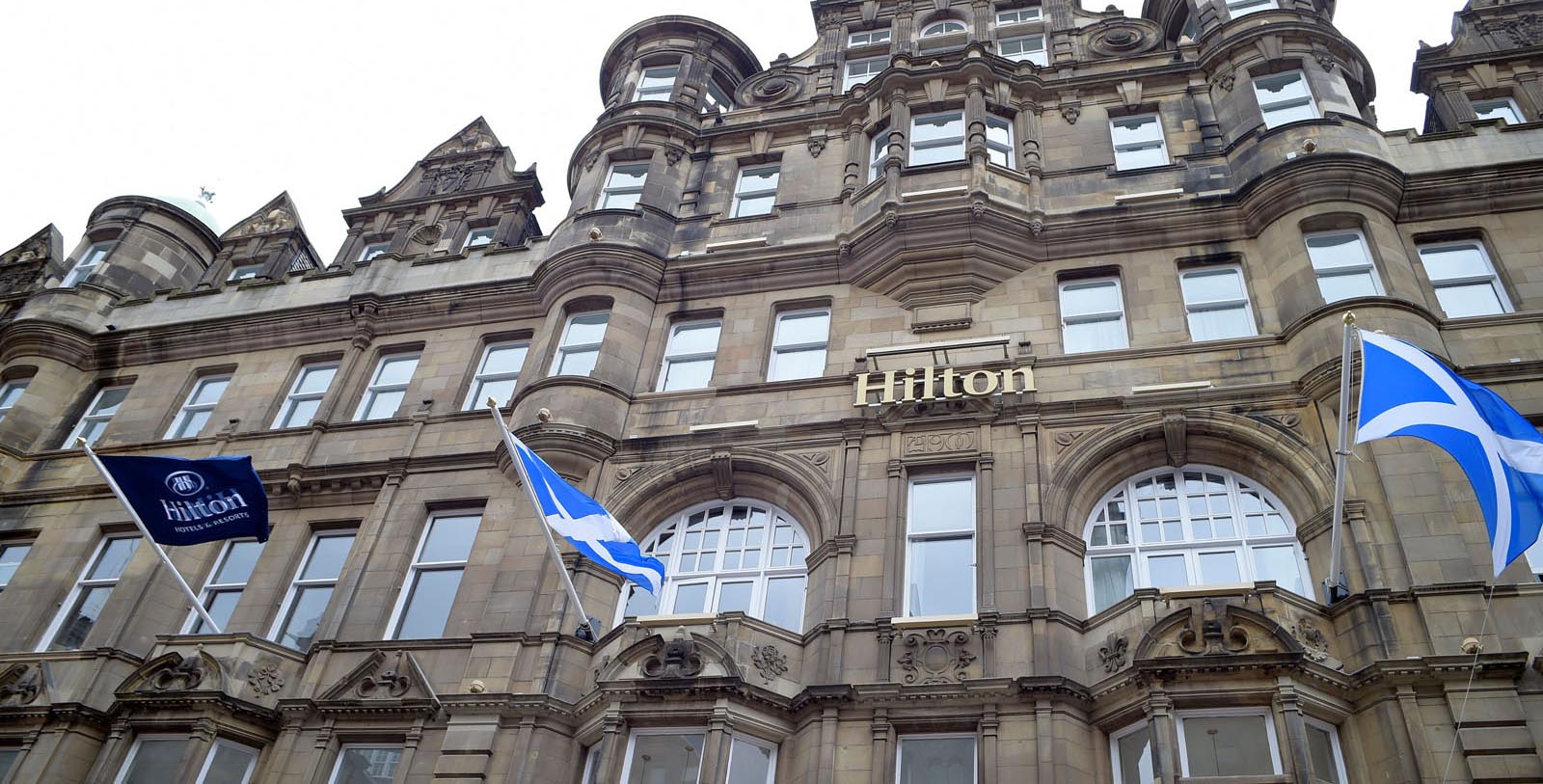Receive for Free - Discover & Explore eNewsletter monthly with advance notice of special offers, packages, and insider savings from 10% - 30% off Best Available Rates at selected hotels.
history
Discover the Hilton Edinburgh Carlton, which spent many decades as the home of the prominent department store Patrick Thomson.
In 1889, an aspiring haberdasher by the name of Patrick William Thomson began his fledgling career by opening a small storefront in Edinburgh. Remarkably, Thomson was only 29 when he started working on his own. Naming the business after himself, he operated the store near the city’s South Bridge. The little shop became an overnight sensation. In a matter of months, the Patrick Thomson (the store’s name) had allured countless shoppers with its high-quality textiles and affordable prices. Animated by the store’s rapid success, Thomson quickly began searching for a new location from which to expand upon its burgeoning popularity. The young haberdasher eventually settled on using a massive building that had recently been erected along the nearby North Bridge road.
Like much of Edinburgh during the late 19th century, both the North Bridge and the surrounding neighborhood were redeveloped to cater to the city’s growing population. The area underwent a significant period of renovation during the 1890s, with the North Bridge widened considerably at the end of the decade. Dozens of entrepreneurs then began constructing new buildings in the vicinity, including a spectacular four-story structure just to the east of the bridge. Designed by a team of five Scottish architects, the imposing edifice displayed breathtaking Renaissance-Revival architecture. Striking cream-sandstone ashlar constituted the building’s façade, while magnificent cooper turrets lined its rooftop. When construction finished in 1899, the new building stood as an architectural masterpiece. It was here that Patrick William Thomson moved his whole enterprise.
Thomson reopened his store at the North Bridge in 1906. Even though he died unexpectedly a year later, the store continued to grow. Customers kept flocking to the Patrick Thomson, transforming it into one of the most popular department stores in all of Edinburgh. At the Patrick Thomson, shoppers gained access to the latest fashions. They could easily choose from a wide range of designer shoes, millinery, and costumes. But the store soon offered more than just clothing, as it had quickly grown to encompass 60 unique shopping departments. Everything from furniture to toys were available. As such, the Patrick Thomson rose to become a serious competitor for the prominent local shopping centers, including Jenners, Goldbergs, and Robert Maule & Sons. Known affectionately throughout the city as “PT’s,” the Patrick Thomson was the exclusive place to shop for decades.
By the 1970s, the famous British retailer, House of Frasier, had come to acquire the department store. While the company retained the building’s name for some time, it ultimately decided to take the business in a different direction. The Patrick Thomson subsequently closed its doors in 1976, only to reopen under the House of Frasier’s “Arnotts” brand immediately thereafter. It was not to last. The company’s choice to abandon the Patrick Thomson’s storied past was incredibly unpopular in the city. With its clientele steadily dwindling, the House of Frasier shuttered the store six years later.
The erstwhile Patrick Thomson sat dormant until the House of Frasier sold it to hoteliers in 1984. A rush of new energy entered into the structure, as its proprietors converted the site into a luxury hotel consisting of a few hundred marvelous guestrooms. Locals soon knew the of the building by another name: “The Carlton Hotel.” Later in 1999, a forerunner to the United Kingdom’s leading hotel management company, Amaris Hospitality, acquired The Carlton. Aramis Hospitality then formed a partnership with Hilton Worldwide in 2016 to jointly manage the location. Both companies now run the hotel together as the Hilton Edinburgh Carlton. Revitalized, the building is once again a preeminent fixture at the North Bridge.
-
About the Architecture +
Designed by a team of five Scottish architects, the imposing edifice displayed breathtaking Renaissance-Revival architecture. Striking cream-sandstone ashlar constituted the building’s façade, while magnificent cooper turrets lined its rooftop. When construction finished in 1899, the new building stood as an architectural masterpiece.

























